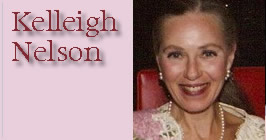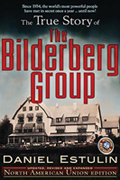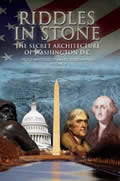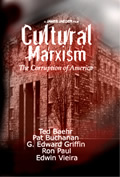PART 3
By
Kelleigh Nelson
April 2, 2013
NewsWithViews.com
The care of human life and happiness and not their destruction is the first and only legitimate object of good government. —Thomas Jefferson
Here is a story told to me by a dear pro-life friend about the passing of her husband's grandfather. I've heard similar stories many times.
"After breaking his hip and getting a replacement at age 92, he was sent home with Hospice. For approx two weeks, Hospice told the family he was to have no water or food, not even ice, even though his 85 year old girlfriend snuck him ice. He would take it. He was cognitive and looked at you and still was laughing at our jokes. My husband used to always pray and read the Bible when he visited. If his grandfather even thought my husband was going to leave without a prayer, he would request him to pray for him.
Three days before he was murdered, my husband went to sing hymns to him and his grandfather looked at him and tried to speak, but his mouth was so dry he couldn't. Grandfather's daughters were instructed to give him pain meds every two hours, a cocktail of morphine, Benadryl and another one which is a respiratory suppressant. The day before his death, I was massaging the back of his neck and head which rigidity had already begun to set in, he RESPONDED to my touch. The next day, Christmas Eve morning we were with him. When we got there he GRUNTED at my husband as if to say, pray for me! My husband did. Grandfather has just received his "pain" medicine 20 minutes before, and the hospice nurse gave him another syringe. I pulled my husband into the bathroom and told him that she had just finished him off and he'd be dead in ten minutes, Twelve minutes later, he was gone. I watched this man who did not want to die, suffer from thirst and hunger. I watched him be murdered by Hospice as his ignorant family stood by and allowed it."
The above story is all too common in today's society, whether it be in a hospital, nursing home, Hospice care facility, or the home of the individual. Hospice did not start out like this and was never intended to be a passive euthanasia, pro-euthanasia, or assisted suicide organization.
There are three individuals who have had the greatest impact on end-of-life care in America: Physician Dame Cicely Saunders; Dean of Nursing (at Yale) Florence Wald, RN, MN; and Elizabeth Kubler-Ross, MD.
The originator of Hospice, Dame Cicely Saunders, would never have allowed the inhuman treatment of my friend's relative. Her Hospice care was guided by her Christian faith and by God's Word.
Dame Cicely Saunders and St. Christopher's Hospice
Hospice can be extremely beneficial in the care of terminal patients, and as I reported in Part 2 of this series, they were wonderful to my friend's mother. Today however, there are many Hospice organizations. This pioneering woman, physician Dame Cicely Saunders, opened the first modern hospice in a residential suburb of London in 1967. In 2013, St. Christopher's Hospice welcomes around 4,000 visitors annually and more than 50,000 health care professionals from all over the world visit and train there. Dame Cicely believed in a service that helps those at the end of the life by relieving their sufferings, but which would not hasten death in any manner.
Saunders originally set out in 1938 to study politics, philosophy, and economics at St. Anne's College, Oxford University. In 1940, she left to become a student nurse at the Nightingale Training School of London's St. Thomas's Hospital.
As a student nurse during WWII, she had witnessed terrible pain and suffering. She came to believe three things were important in passing from this world. She felt strongly that people needed relief from physical pain, they needed help with the psychological and spiritual pain of death, and they needed to preserve their dignity.
In 1948, she fell in love with a patient, David Tasma, a Polish-Jewish refugee who, having escaped from the Warsaw ghetto, was dying of cancer. He left her 500 pounds to be what he called, "a window in your home." (Today this would be about $740.00. I don't know what the exchange would be in 1948.) That act, which helped germinate the idea that became St Christopher's, is remembered by a plain sheet of glass in the entrance to the hospice.
As a result of their conversations and his gift of love, Saunders discovered her mission, to ease all kinds of end-of-life pain. In a 2002 interview for The Daily Telegraph of London, she said, “I didn't set out to change the world; I set out to do something about pain." Saunders’ work was a “personal calling, underpinned by a powerful religious commitment,” wrote David Clark, an English medical school professor of palliative care and Saunders’ biographer.
After some years in nursing, she went into training for social work. During this time, she vacationed with some Christians, and went through a conversion experience. In the late 1940s, Saunders was working part-time at St Luke's Home for the Dying Poor in Bayswater. This position was one of the reasons which led her to begin studying in 1951 at St Thomas's Hospital Medical School to become a physician.
Compelled by her mission, she volunteered at St. Joseph's Hospice in London, where she remained for seven years and researched pain control. It was while there that she met a second Pole, Antoni Michniewicz, a patient with whom she fell in love. His death, in 1960, coincided with the death of Saunders' father, and another friend, and put her into what she later called a state of "pathological grieving." She had already decided to set up her own hospice focused on cancer patients, and said that Michniewicz's death had shown her that "as the body becomes weaker, so the spirit becomes stronger."
Because the patients at St. Joseph's were perceived as beyond help, the nuns didn’t stick to pain control guidelines. Saunders learned to administer morphine before pain appeared, thus staying ahead of the pain. This would later influence her ideas about pain management and treatment. Saunders conceived of giving patients a regular pain control schedule, which, in her words, “was like waving a wand over the situation.”
Her surgeon friend advised Saunders that if she were dedicated to pain management and caring for the terminally ill, people wouldn’t listen to a nurse. So, at the age of 33, at a time when there were few women doctors, she studied to be a physician. When she earned her medical degree in 1957 she became the first modern doctor to devote her career to dying patients. Antoni Michniewicz had inspired her to name her own hospice for people in the final stage of life’s journey. He suggested she name it after the patron saint of travelers, St. Christopher. It would take her another ten years to open St. Christopher’s Hospice, the world's first modern hospice, and she’d spend more than 50 years trying to humanize the dying experience for patients and their families.
Dame Cicely claimed that after 11 years of thinking about the project, she had drawn up a comprehensive blueprint and sought finance after reading Psalm 37:5, "Commit thy way unto the Lord; trust also in him; and he shall bring it to pass." Saunders was dedicated to improving care for the dying and their families. She recognized the value in a person's life up till the very end, and her vision of end-of-life care is what was so inspiring to many Americans who came to embrace the new way of caring for the dying. One of her legacies is the change in pain management. Saunders questioned practitioners' fears that their dying patients would become addicted to medications. Rather than respond to pain with intermittent sedation, Saunders’ novel method of pain control provided a steady state in which a dying patient could remain conscious and maintain a good quality of life.
Saunders was also instrumental in the history of UK medical ethics. She gave one of the first London Medical Group (LMG) lectures on the subject of pain, developing the talk into 'The nature and Management of Terminal pain' by 1972. This talk went on to be one of the most often repeated and requested lectures of the LMG and other such Medical Groups that sprung up around Great Britain where it was often given as their inaugural lecture. Her talk on the care of the dying patient was printed by the LMG in its series "Documentation in Medical Ethics," a forerunner of the "Journal of Medical Ethics."
| Subscribe to the NewsWithViews Daily News Alerts! |
The founder of Hospice was an Englishwoman who had a huge impact on our world. Yet, her philosophy was simple. As she said to patients, “You matter because you are you, and you matter to the last moment of your life.” Dame Cicely died of cancer at the age of 87 in 2005, at St Christopher's Hospice, the hospice she herself had founded.
Thus, Americans have enthusiastically accepted hospice as it was envisioned and practiced by Dame Cicely Saunders: a service that relieves suffering at the end-of-life but does not hasten death in any manner.
In Part 4, we'll discuss both Elizabeth Kubler Ross and then Florence Wald and their legacies on American Hospice care, both of which are far different than Dame Cicely Saunders' Hospice.
Click here for part -----> 1, 2, 3, 4, 5, 6, 7,
© 2013 Kelleigh Nelson - All Rights Reserved
Kelleigh Nelson has been researching the Christian right and their connections to the left, the new age, and cults since 1975. Formerly an executive producer for three different national radio talk show hosts, she was adept at finding and scheduling a variety of wonderful guests for her radio hosts. She and her husband live in Knoxville, TN, and she has owned her own wholesale commercial bakery since 1990. Prior to moving to Tennessee, Kelleigh was marketing communications and advertising manager for a fortune 100 company in Ohio. Born and raised in Chicago, Illinois, she was a Goldwater girl with high school classmate, Hillary Rodham, in Park Ridge, Illinois. Kelleigh is well acquainted with Chicago politics and was working in downtown Chicago during the 1968 Democratic convention riots. Kelleigh is presently the secretary for Rocky Top Freedom Campaign, a strong freedom advocate group.
Website: www.rockytopfreedom.com
E-Mail: Proverbs133@bellsouth.net











 Share
This Article
Share
This Article




